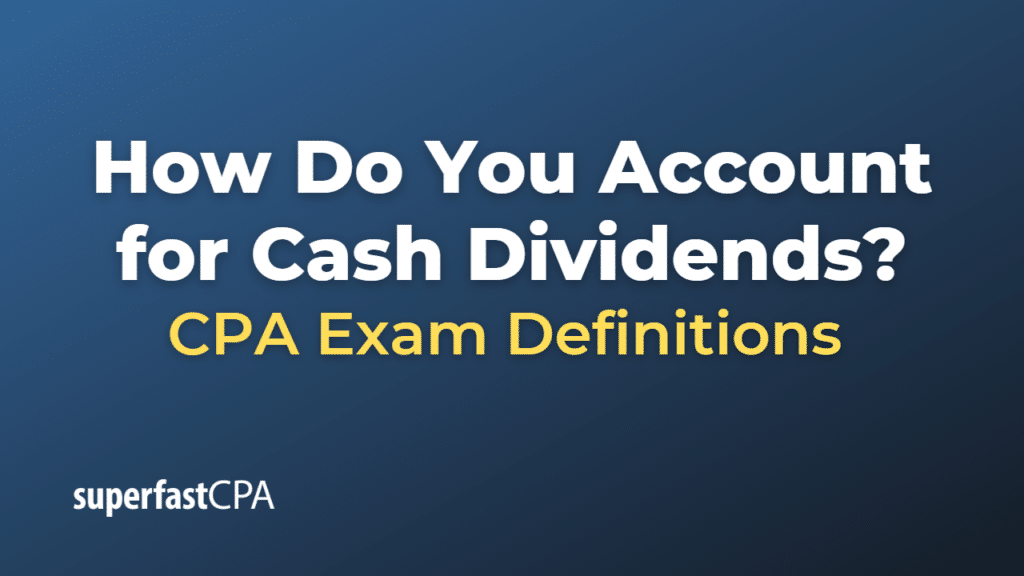How Do You Account for Cash Dividends
Accounting for cash dividends involves two key stages: the declaration of the dividends by the company’s board of directors, and the payment of the dividends. Here’s how the accounting for these two stages typically works:
- Declaration of Dividends: When the board of directors declares a dividend, a liability is created for the company. The company needs to record this liability in its books. Here’s the journal entry:Debit: Retained Earnings (Equity section in the Balance Sheet) Credit: Dividends Payable (Current Liability in the Balance Sheet)The debit reduces the company’s retained earnings, which represent the accumulated profits that have not been distributed as dividends. The credit establishes a current liability, reflecting the company’s obligation to pay the dividend.
- Payment of Dividends: When the company actually pays the dividends, it reduces its liabilities (Dividends Payable) and its assets (Cash). The journal entry is:Debit: Dividends Payable (Current Liability in the Balance Sheet) Credit: Cash (Asset in the Balance Sheet)The debit reduces the company’s dividends payable liability, and the credit reduces the company’s cash balance.
For example, let’s assume a company declares a cash dividend of $1,000. On the date of declaration, the entry would be:
Debit: Retained Earnings $1,000 Credit: Dividends Payable $1,000
Then, on the payment date, the company would record:
Debit: Dividends Payable $1,000 Credit: Cash $1,000
This ensures that the company’s financial statements accurately reflect its obligation to pay the dividends (when they are declared) and the reduction in its cash balance (when the dividends are paid).
Example of How to Account for Cash Dividends
Let’s assume that on March 1, 2023, the board of directors of XYZ Corp. declares a $2 per share cash dividend on its 10,000 outstanding shares, for a total dividend of $20,000. The dividend will be paid to shareholders on April 1, 2023. Here’s how XYZ Corp. would record these transactions:
On March 1, 2023 (Declaration Date)
On the date that the dividend is declared, the company recognizes a liability for the amount of the dividend that will be paid. The journal entry on the declaration date would be:
Debit: Retained Earnings $20,000
Credit: Dividends Payable $20,000
This entry reduces Retained Earnings (an equity account) and increases Dividends Payable (a liability account), reflecting the company’s obligation to pay the dividend.
On April 1, 2023 (Payment Date)
On the date that the dividend is paid, the company reduces (debits) its Dividends Payable liability and reduces (credits) its Cash balance for the amount of the dividend. The journal entry on the payment date would be:
Debit: Dividends Payable $20,000
Credit: Cash $20,000
This entry eliminates the liability that was created when the dividend was declared and reduces the company’s Cash account by the amount paid out to shareholders.
These entries reflect the impact of declaring and paying dividends on the company’s financial statements.













